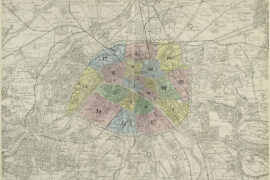This is a part of the City Palace, a royal residence of the Middle Ages, and it has kept its name from its original construction. The concierge of the palace is in charge there, as the Paris Chief of Police and Law Enforcement. In the 14th Century, Charles V gave up his residence inside for new surroundings at The Louvre, and he transformed the building into a state prison. On the right bank of the river, one can still see the reflection of the four towers that make up this grand medieval building. The first one (going from west to east), the Bonbec Tower, covered the sinister chambers of interrogation. The Argent Tower housed the treasure of the kings, the César Tower had been elevated upon Roman foundations, and the Horloge Tower shows the first public clock in Paris that was ever built – this has been in place since 1370.
Although the stories have been revised many times over the centuries, La Conciergerie was an exciting place during the revolution. In effect, its yard was never penetrated – especially after the installation of the Revolutionary Tribunal in 1793! ‘Pallieux,’ such as the illustrious Marie Antionette, Charlotte Corday or Lavoisier, were entrusted there to the executioner Sanson and his guillotine. In the 19th Century, the prison welcomed more famous guests, such as the criminal Lacenaire, the anarchist Ravachol, and the future Napoléon III after an unsuccessful coup. When it was classified as a historic monument in 1914, La Conciergerie was transformed into a museum.
Image source : http://www.freehdwall.net/2013/01/la-conciergerie-paris-france-castle.html
Location of the attractions
in the 1st arrondissement of Paris
| Title | Category | Address | Description | Link |
|---|





